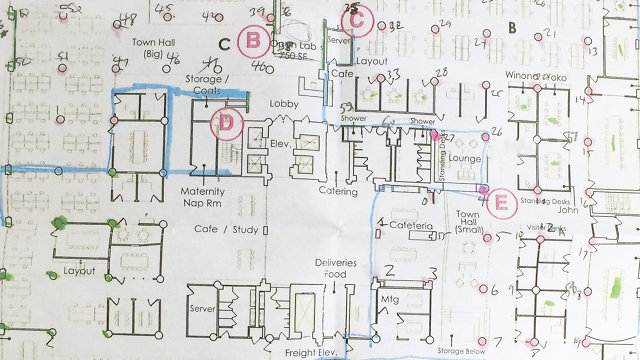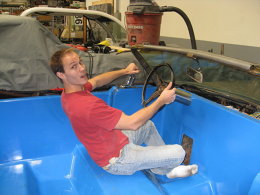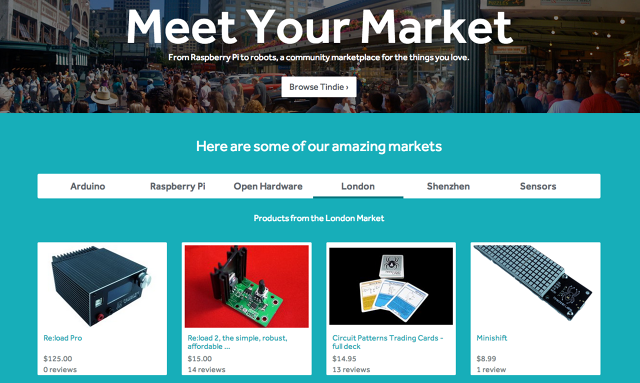Coworking spaces are all the rage right now, but coming from a graduate program in the hardware-hack-happy MIT Media Lab, James Patten found his coworking options weren't nearly as appealing here in New York as they were when he was in Cambridge, with its labs, libraries, tools, and workspaces.
"People would just kind of stop and talk in the halls and answer each other's questions about whatever they were working on," he says of the Media Lab. "I think I learned more in that kind of experience in school than anywhere else, and so I wanted to try to re-create that."
The kind of "serendipitous" workplace that Steve Jobs famously loved is even more important when all the products in the building are in prototype stage--a common case in coworking and incubator spaces. And while that's the titular purpose of traditional coworking spaces, hardware coworking spaces have different requirements--like more space, more spare parts, and a different kind of "maker" clientele.

"Our landlord is the junk collector, and so that sets the tone for the space," says Patten, who has founded his own hardware hacking loft in downtown Brooklyn called Dark Matter Manufacturing Collective.
"A friend of mine was doing a project for a retail store a few months back and he needed some mannequin arms--he went down to the basement, and sure enough there is a box full of mannequin arms there," says Patten.
Why Hardware Projects Matter
Patten's own company, Patten Studio, resides in the Dark Matter space. He creates and builds interactive user interfaces and surfaces for spaces like museums, as well as for industrial applications. Patten Studio's projects focus on touch, which he says is critically missing from our interactions with computers today.
"Touch screens are basically everywhere now, but when we're using them, you're not actually getting very much information from the screen through a sense of touch," he says; touch screens feel the same whether you're tapping an on-screen keyboard or tapping a device that's turned off.
In the real world, he says, "it's tactile feedback that allows you to direct your visual attention to another place. The more we take advantage of the sense of touch, the more it becomes like riding a bicycle."

That's good, he says, because it means more humans can collaborate with a single computer. "It's hard for multiple people to reach in and participate at the same time," Patten says of touch screens. "It's hard to follow what people are doing, because the input and output happen in different places. If we use what we call tangible interfaces, then we can tie into these existing social practices of sharing, and it's easier to follow what other people are doing."
Patten's projects consist mostly of playful art installations, such as museum exhibits; his interactive exhibit of the periodic table of elements is on display at the Chicago Museum of Science.
But Patten says his favorite and perhaps most versatile project is Thumbles, pictured above, which are small robots that drive around a tabletop surface under computer control. People can interact with and control the Thumbles by moving them, and the computer can react to those interactions via a smart tabletop called the Sensetable, which Patten says will have real-world computing applications.
The Minds Inside Dark Matter Manufacturing Collective
Along with Patten Studio, Dark Matter Manufacturing Collective is home to 13 other companies. They pretty much cover all the bases, from the country's first community biolab to Andy Cavatorta, who made a "gravity harp" for Bjork's tour.
The other teams in residence here are a motley group, but Patten says it's not about creating a club for "hardware hackers only." Instead, it's more about attracting people of a certain mindset.
"With one exception, we all make stuff and make physical things with our hands. But beyond that there is a lot of variation from where people are coming from," Patten says. "Whether it's software and electronics like me or mechanical engineering or music, costume and set design, there's a lot of variety--which means that if you get stuck, there are a lot of different perspectives that people can offer to try to help you solve your problem."
A variety of colorful residents means colorful projects, and challenges that normal labs or coworking spaces couldn't accommodate.
"We were doing a kinetic installation for Barneys and for part of it we had to figure out how to drill a hole exactly through the center of a bowling ball," Patten says. "It turns out this is actually really tricky to do." Between the group in the loft, they figured it out.
Beyond hardware hacking, Patten wanted a unique social environment for his space, so he instituted some interesting membership requirements. To join the space, a new member has to be recommended by someone who is in the space already. They also must give a presentation and Q-and-A session about their work, and then be voted in by a two-thirds majority.
"The people in this space sort of share this large intellectual network and because of that there is a lot of trust from the beginning," he says. "You know, this person's not going to steal my idea or whatever so I can be really open about that idea with them and then maybe in turn they'll have something to add. So there's this kind of free, open sharing of knowledge that I think is sometimes difficult to have in a traditional coworking space."















































